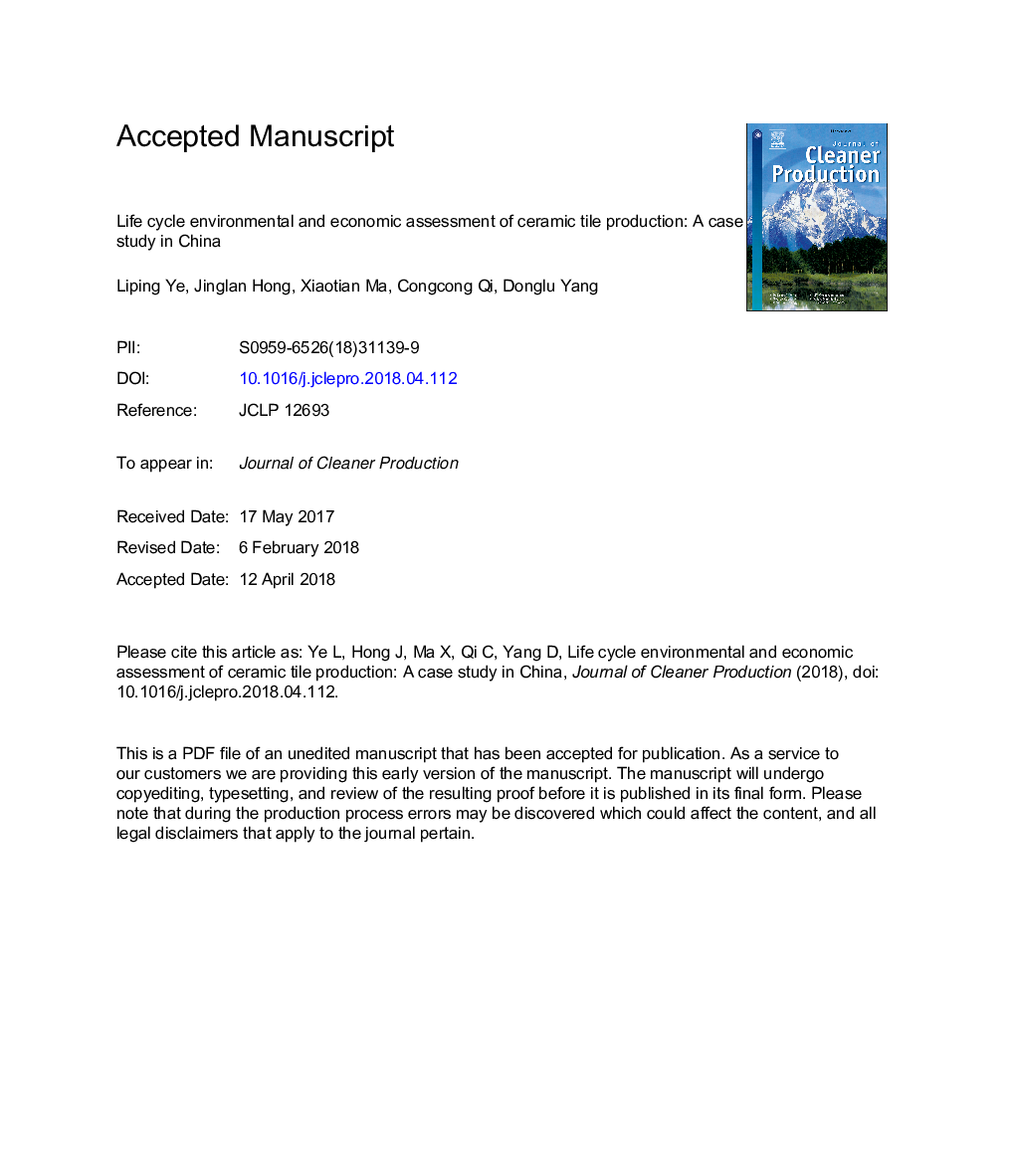| Article ID | Journal | Published Year | Pages | File Type |
|---|---|---|---|---|
| 8095167 | Journal of Cleaner Production | 2018 | 37 Pages |
Abstract
Ceramic tiles are important building materials, but their production consumes large amounts of energy and raw materials and causes serious pollution. In this study, a cost combined life cycle assessment is conducted to quantify the environmental and economic impacts of ceramic tile production from cradle to gate and identify the key substances and processes to eliminate production issues. Results show that marine ecotoxicity, climate change, terrestrial ecotoxicity, human toxicity, and fossil depletion are the key environmental impact categories. Key substances include chlorine in soil, sulfur dioxide in air, and carbon dioxide in air. The total economic cost is $2.77/m2, and this cost mainly originates from raw materials. Inorganic chemicals used as raw materials account for general environmental (12.9%) and economic (39.6%) burdens. Application of alternative electricity generation types, such as hydropower as a replacement for coal power, can reduce the impacts on climate change and marine ecotoxicity by 98.4% and 96.4%, respectively, during the electricity generation stage. An environmental and economic win-win situation can be achieved by reducing the use of inorganic chemicals, coal, and electricity and optimizing the transport of raw materials.
Related Topics
Physical Sciences and Engineering
Energy
Renewable Energy, Sustainability and the Environment
Authors
Liping Ye, Jinglan Hong, Xiaotian Ma, Congcong Qi, Donglu Yang,
